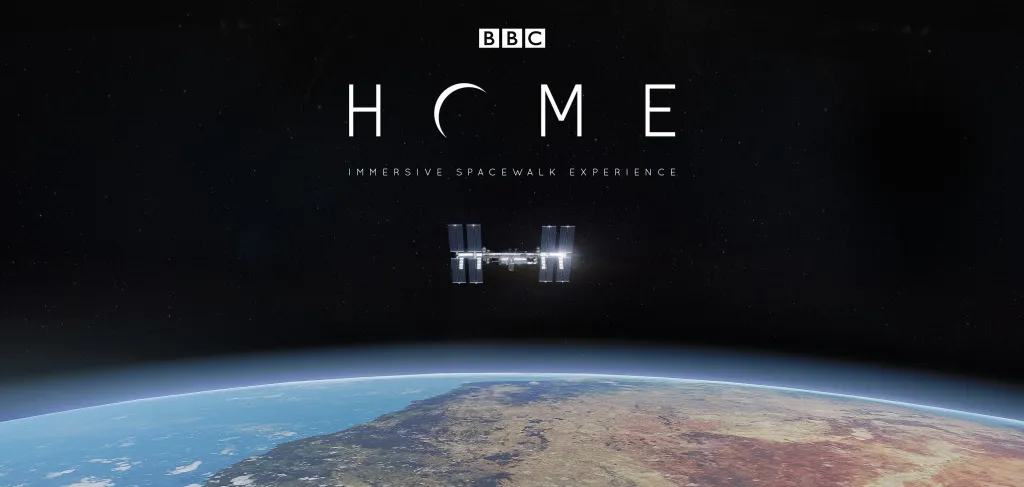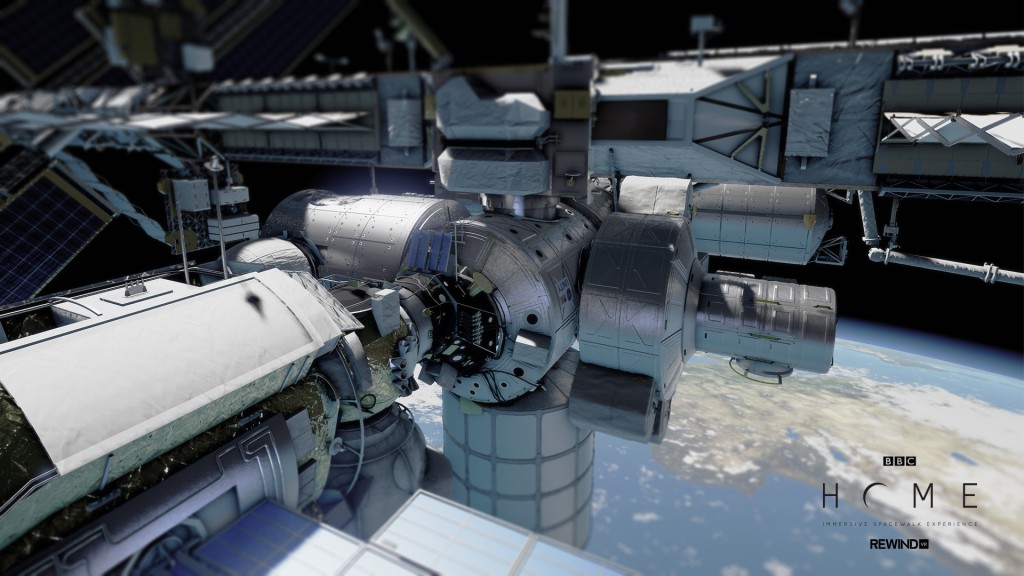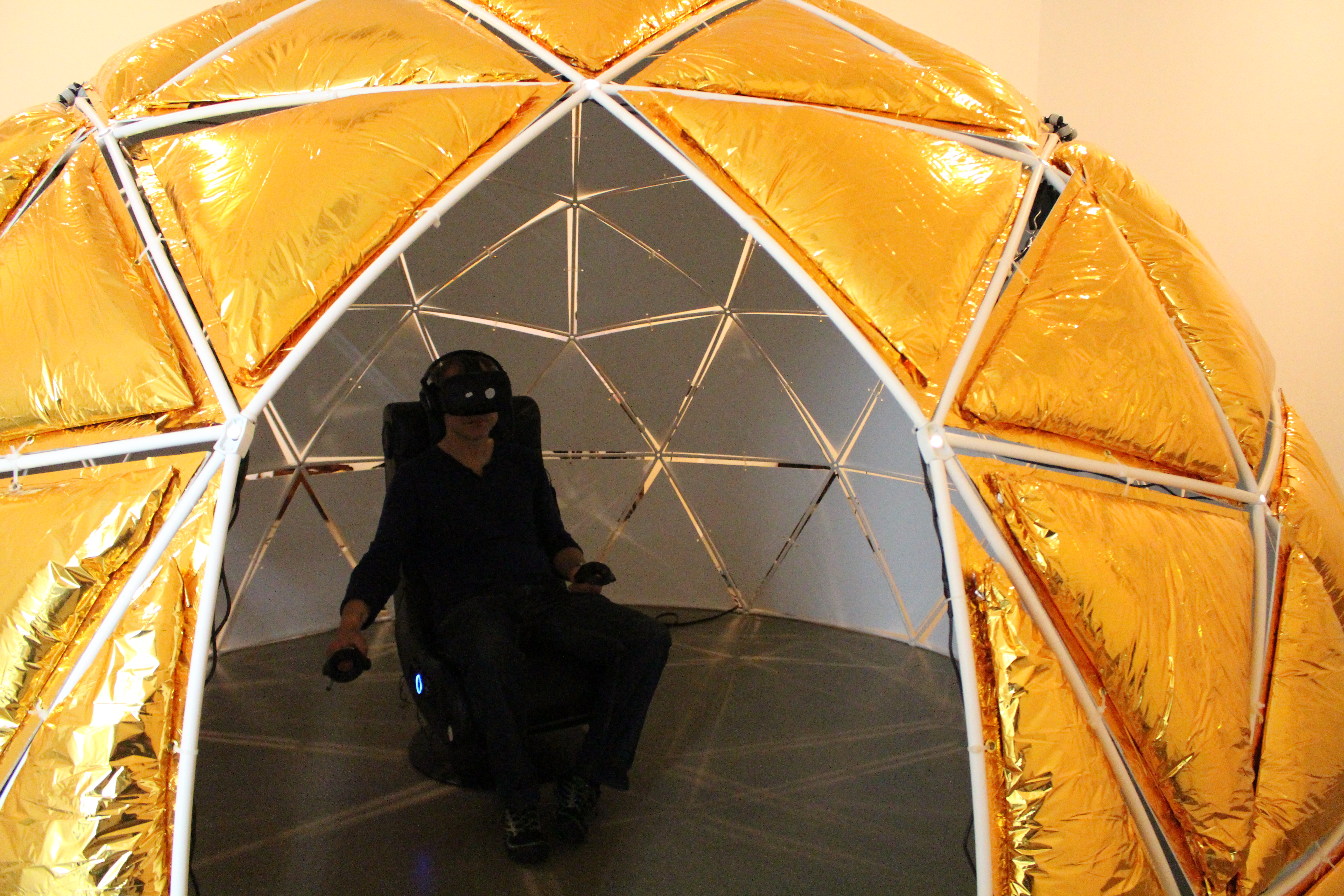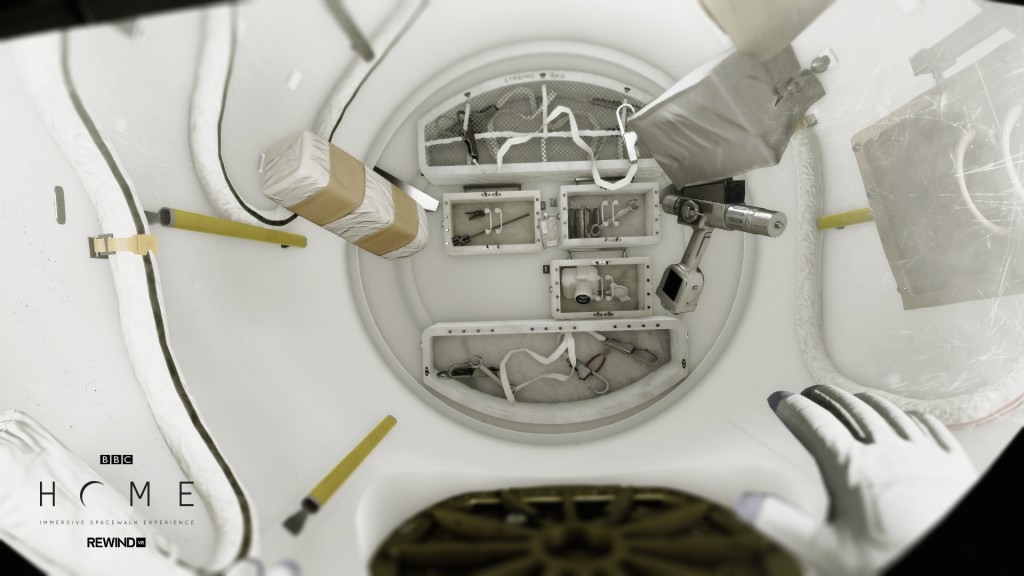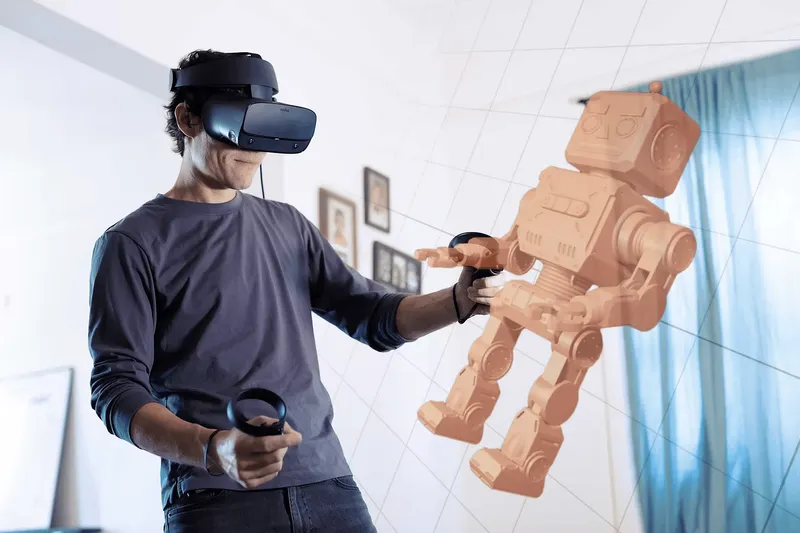I have to admit that when Home told me I was about to embark on my first ever spacewalk around the International Space Station (ISS), I rolled my eyes a little. This is far from my first time in VR space, having already been wowed by Escape Velocity’s brief but cinematic tour of that same structure, waded through ADR1FT’s ruins, and competed against others in Detached. Space is practically my second home, so it’s no longer enough to simply take me there. Fortunately, Home does offer a more authentic and novel experience compared to what’s come before.
On display at this week’s Sheffield Doc/Fest and developed by both the BBC and London-based VR production house, REWIND, Home – An Immersive Space Experience is a short, atmospheric first-person piece for the HTC Vive that’s highlighted by a unique approach to locomotion. You’re cast as an astronaut (obviously) that’s sent out to inspect damage to the ISS, though you’ll have to go the long way around to locate the damage.
To do this, you use the Vive’s controllers to reach out and grab a series of yellow bars fixed to the station and then pull yourself towards them. It’s essentially an elaborate ladder of sorts, winding around corners and clinging to rails that will leave your legs dangling above our own blue planet.
It speaks to just how convincing Home is that I found myself sheepishly letting go of rails with one hand – the other still firmly stuck to it – and reaching out for the next one to seize it as quickly as possible. There were particular moments when reaching the edge of the station that I’d really feel vulnerable, getting a sharp pang of panic as I poked my head over the side to see Earth so threateningly far below. I had no idea what would happen if I let go and let myself fly, but I simply didn’t want to find out.
The real world setup for this input is seated. I was on a chair that delivered feedback with every bump and scrape, but I couldn’t help but feel I’d have been a little more immersed if I had been allowed to stand. There are unavoidable gaps in sensations; you’re feet are planted firmly in the real world and you’re not rotating you own body when climbing round a corner, but in certain moments it hits the ‘presence factor’ out of the park.
Towards the end of the experience you’ll also get to steer a jetpack, which is directed with a joystick that you’ll grab hold of in-game. It keeps the piece consistent (I was worried I’d have to navigate using the touchpads), and is rightfully tricky to get the hang of. You lurch the controller back and forth to get a feel for the controls, and course correction plays a big part in the fun. I’m told I was one of only a handful that had successfully managed to glide their way back to the station, which is practically right in front of you after an inevitable Gravity moment.
Elsewhere, Home boasts the production value you’d expect out of a collaboration with the BBC, and it does take some interesting twists. For one thing, you aren’t alone. At the start of the experience you’ll be accompanied by another astronaut, whose very presence gives you a sense of security. Thinking back on it now, I truly felt safer having this virtual buddy, and was even relieved when I’d catch a glimpse of him as I scaled a wall. It’s the first time a virtual character has had that effect on me, which is a remarkable achievement.
One of the more predictable elements is that blockbuster moment I mentioned above. I won’t spoil when it happens, but suffice to say Home doesn’t pass up the opportunity to hurtle you away from the station at one point, hoping you’ll do your best Sandra Bullock impression. It’s a fleeting few seconds, but it feels like a betrayal of this otherwise tempered showcase of VR.
We don’t need to have the loud explosion and flailing arms and legs every time we visit the ISS; I would have much preferred to carry through my routine and simply appreciate the amazing sensation of feeling like a real astronaut. Home would ironically stand out more if it strived for less, and would be a perfect introduction to VR. As it stands, that’s only true of the first three quarters of the experience.
What makes its inclusion stranger is that the piece brilliantly gives you some agency over the tone at one point. Strapped into a platform, you’re taxied over to the damaged area, enjoying a pretty spectacular view as you drift. Over radio, your companion points out that he’s about to play some of his favourite music to complement the scenery, but crucially also lets you know you can turn it off by tapping a panel on your left arm. Some may well choose to keep the soundtrack on, but I elected to turn it off, keen to keep the authentic atmosphere intact. The option to remove the more manufactured element is hugely appreciated, giving you some direction in the overall mood of the piece.
And what a mood it is. At one point in my journey, I gaze down at Earth and notice a thunderstorm sparking over the UK, while later on I get to watch the entire ISS light up to allow me to locate it. Home has some spectacular sights that are complemented by the commitment to immersing the player in the solitude of space. I’ll never get bored of opening an airlock and seeing our planet linger in the distance; it’s one of the most hypnotising things you can see in VR.
Home isn’t the most astonishing entry into the VR space race, but it is a measured, effective piece that’s polished to a shine. For the most part it banks on what it does best: compelling input and complete and utter immersion, but falls apart when it strays from that focus.
All the same, if you want to pay a trip to the ISS, this delivers the goods. Look out for it on BBC Taster soon.

